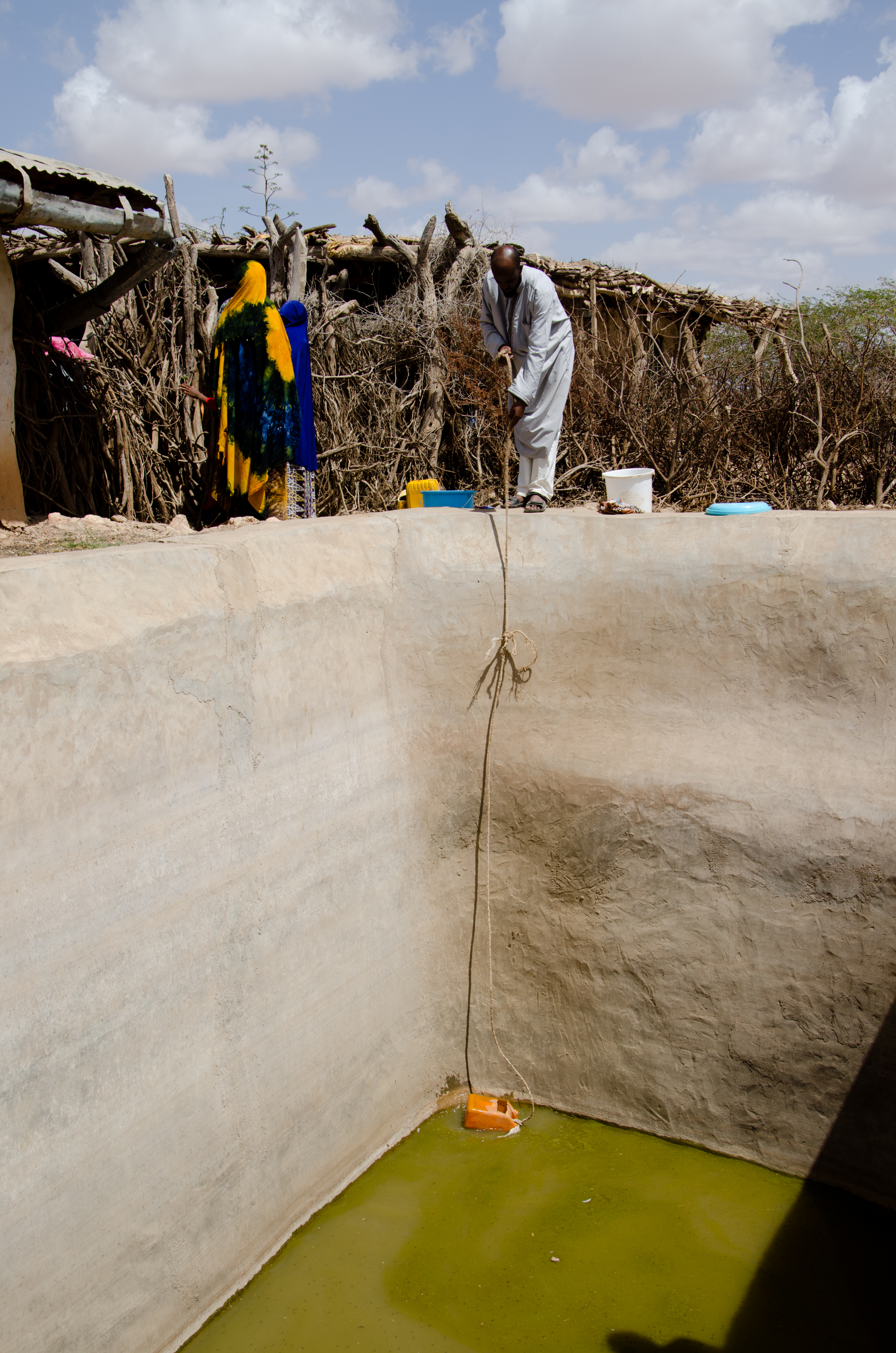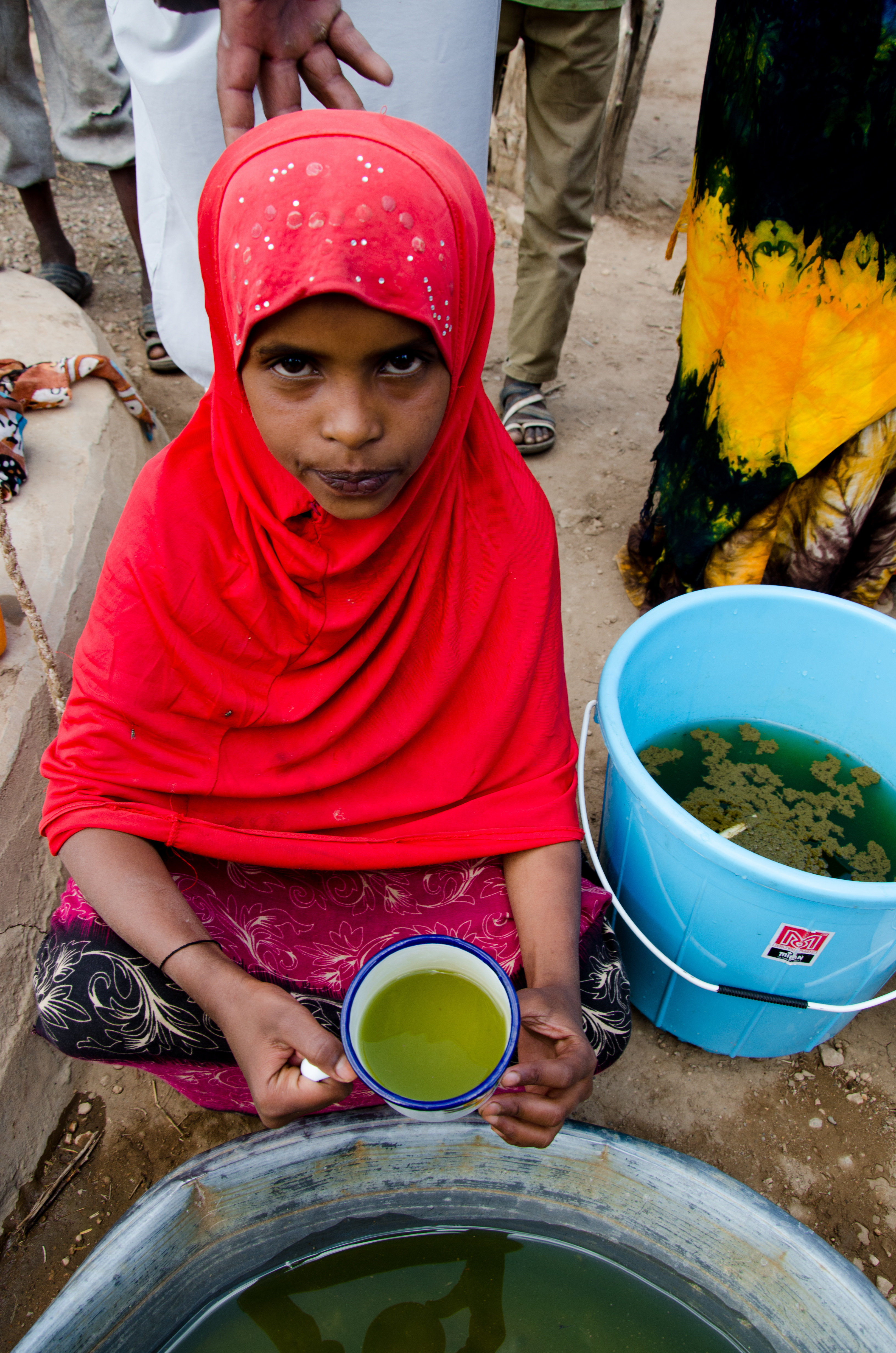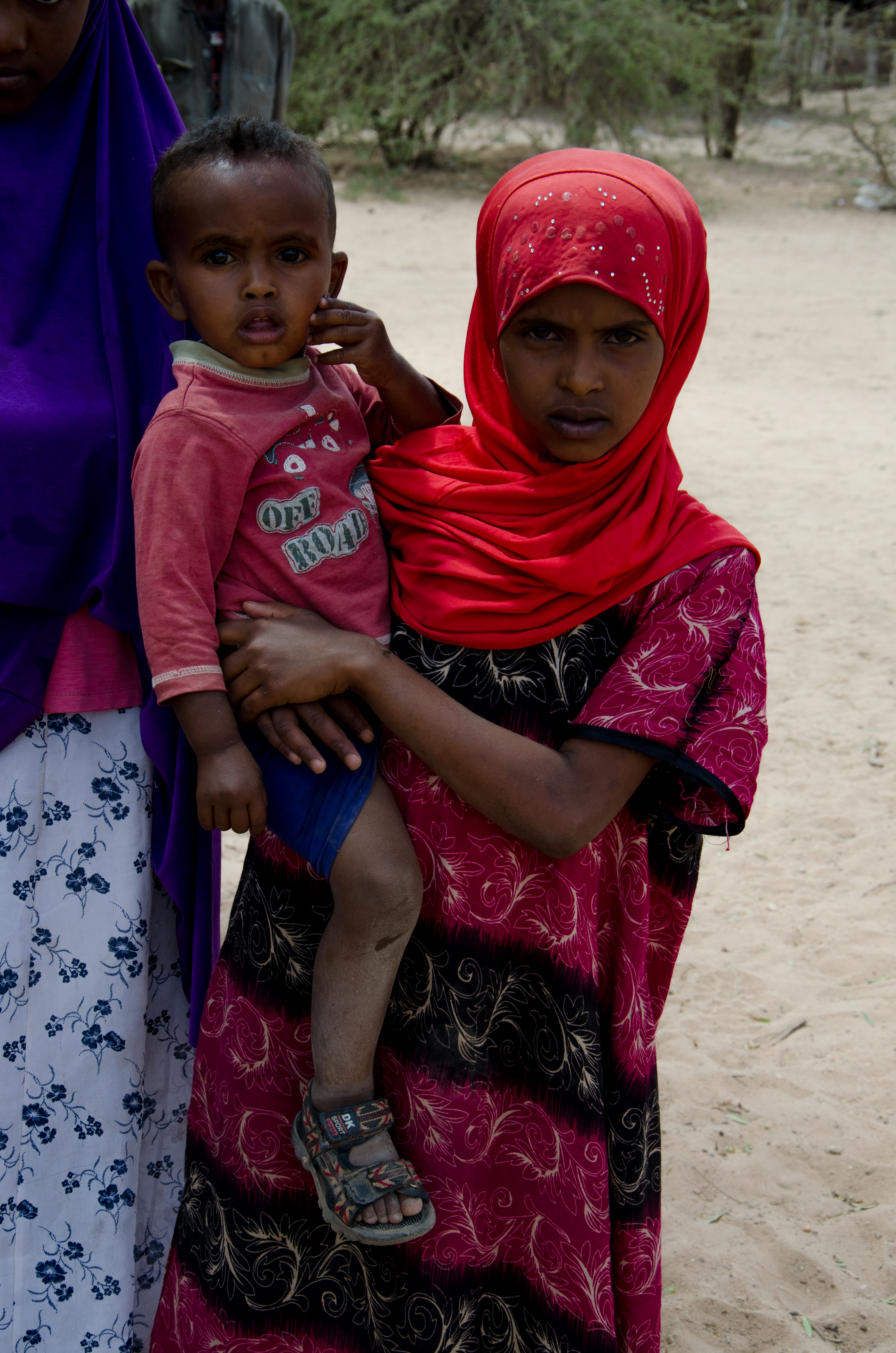Which cup would you drink from?
“The water is so bad, not even our cow will drink it,” Khadar tells us with a glint in his eye, maintaining a little bit of humour in a very tough situation.
The multi-year drought that has afflicted Somalia has nearly drained his family’s water cachement dry. Instead of a pool full of fresh water, their water source has been reduced to just a few inches of stagnant green sludge filled with algae and a host of water-borne diseases.
Khadar Omer Ismael draws brackish water from the bottom of his family’s water cachement in Ijara Village, Somaliland. The drought has nearly drained his community’s water source. Photo: Brett Tarver
The water didn’t just taste bad, it was dangerous to drink for his family and everyone in the community. Malaria, Typhoid and diarrhea became rampant.
“When I had Typhoid I had horrible headaches and couldn’t stop shivering. I was unable to move for a week,” Khadar recalls. “It was terrible. A lot of us got sick.”
Khadar’s daughter, Suhuur, 7, provides a closer look at the water she and her family were forced to drink because of the devastating mulit-year drought across east Africa. Photo: Brett Tarver
World Vision responded with a comprehensive emergency response to relieve the suffering in Ijara Village and 30 other communities in the region, assisting nearly 12,000 people who were in the greatest need. The response focused on both treatment and prevention at the same time. A mobile health clinic treated people with water-borne illnesses and other health needs. And a new water, sanitation and hygiene program included the distribution of purification packets to provide safe, drinkable water.
Water that was once filled with algae and water-borne diseases pours out clear, clean and safe after being treated with a purification packet provided by World Vision. Photo: Brett Tarver.
“We’re all so very thankful to World Vision for what they have done for us,” Khadar said.
Water-borne illnesses are now extremely rare in Khadar’s village. However, while diseases are being held in check here, the damaging effects of drought are being felt across the region. More than 6.2 million people across Somalia, nearly half the population, are in need of immediate humanitarian assistance. The threat of famine is real if the current situation is not addressed
Children from Ijara Village, Somaliland are no longer getting sick from water-borne diseases thanks to purification packets provided by World Vision. Photo: Brett Tarver.
World Vision is appealing for US$18.5 million in emergency funding to assist 530,000 of the most vulnerable people across Somalia with targeted food security, emergency health & nutrition, livelihoods, protection, shelter and WASH programs.


